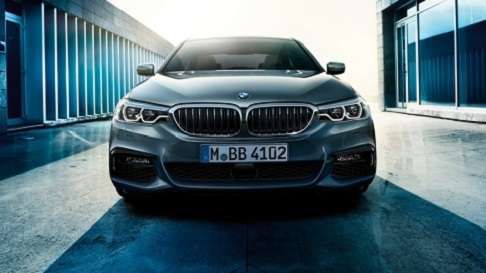Our tool for managing your permission to our use of cookies is temporarily offline. Therefore some functionality is missing.
EMISSION-FREE INTO THE FUTURE.
Sustainability and BMW i.
Reinventing mobility with sustainability in mind takes more than just a vision. You need answers to a plethora of emerging questions, the first of which is: Where does sustainability begin? The answer: in exactly the same place in which it ends.
Sustainability characterises the thoughts and actions of the BMW Group. Which is why the BMW Group is the Dow Jones Sustainability Index leader for the eighth year in succession, making it the most sustainable company in the automotive industry yet again. With EfficientDynamics, BMW has set itself the goal of continually reducing emissions while increasing driving pleasure. BMW i uses a wealth of innovative BMW EfficientDynamics technologies and goes even further: From design to production, from the useful life of the vehicle to its disposal, every detail is based on sustainability. Because sustainability is an attitude that doesn't have a beginning or an end.
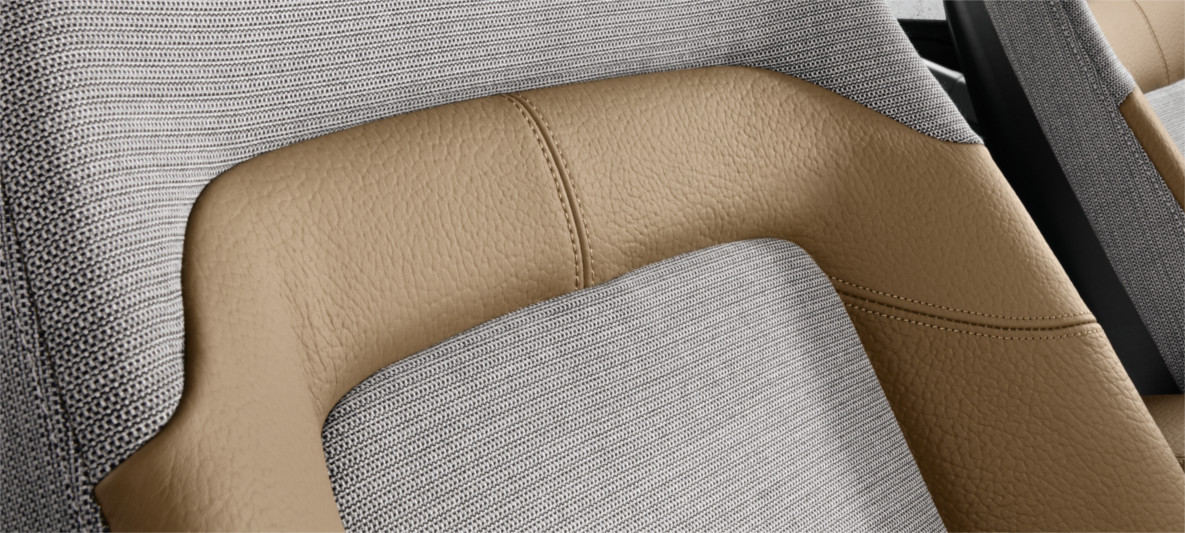
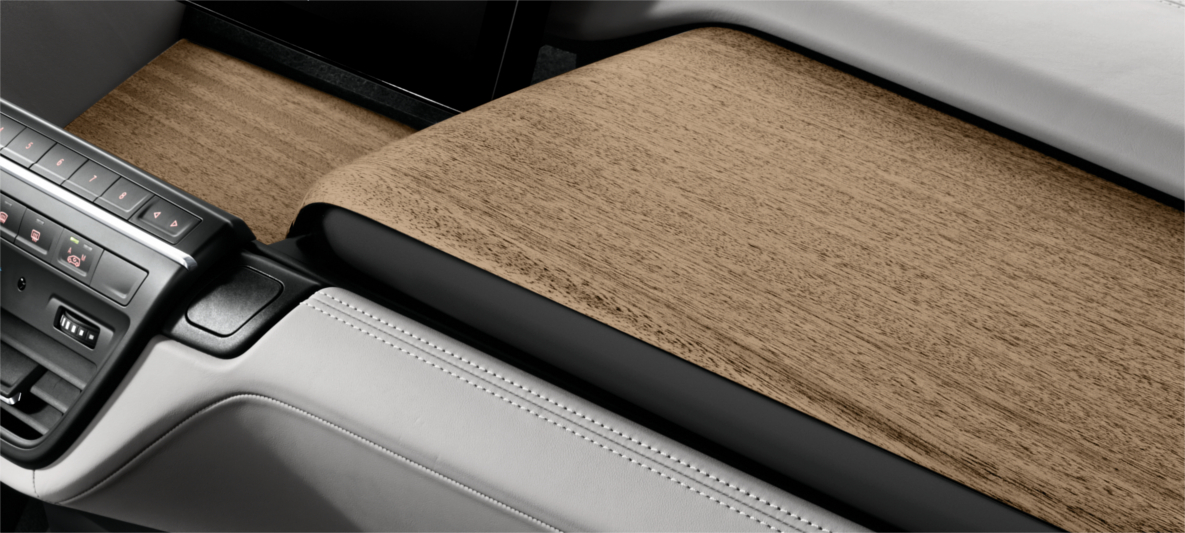
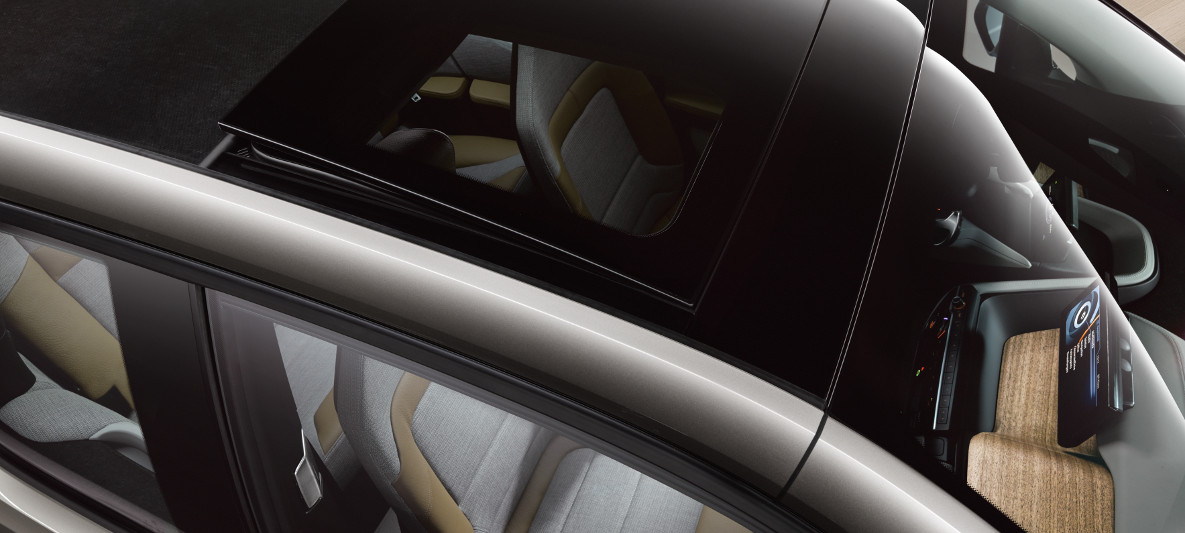
DEVELOPMENT.
The aim of developing the BMW i cars is not simply to build emission-free cars, but also to use the maximum possible amount of sustainably produced and recycled materials – especially inside. The interior of the BMW i3 sets a new standard here and makes sustainability tangible.
Another milestone is the completely innovative LifeDrive vehicle architecture, with its carbon fibre passenger cell and aluminium drive module that reduce its weight enormously and extend the car's range.
LifeDrive
The innovative BMW i LifeDrive architecture, specifically designed for the development of electric cars, reduces the weight and increases the range. Two separate functional units, the aluminium Drive module and the Life module made of high-tech carbon fibre, combine to form an ultralight, strong design. The result: improved energy efficiency, extended range and greater safety.
Aerodynamics
Minimum wind resistance, maximum range: excellent aerodynamics are a key element of efficient electromobility. With BMW i, fully concealed underbodies prevent wind turbulence under the car, while aero-flaps improve the aerodynamics of the wheel arches and side sills behind the front wheels. This reduces wind resistance and the car’s energy consumption, extending the range.
Sustainable materials
Natural, renewable, and sustainable: the interior of the BMW i3 features door trim panels and a dashboard made from renewable natural fibres, naturally tanned leather, and open-pore eucalyptus wood sourced from 100 % FSC®-certified forestry. Overall, 25 % renewable raw materials and recycled plastics were used in the interior of the BMW i3. The textile upholsteries are made of up to 100 % recycled polyster, produced using 34 % PET. A further 25 % recycled plastics are used in the exterior.
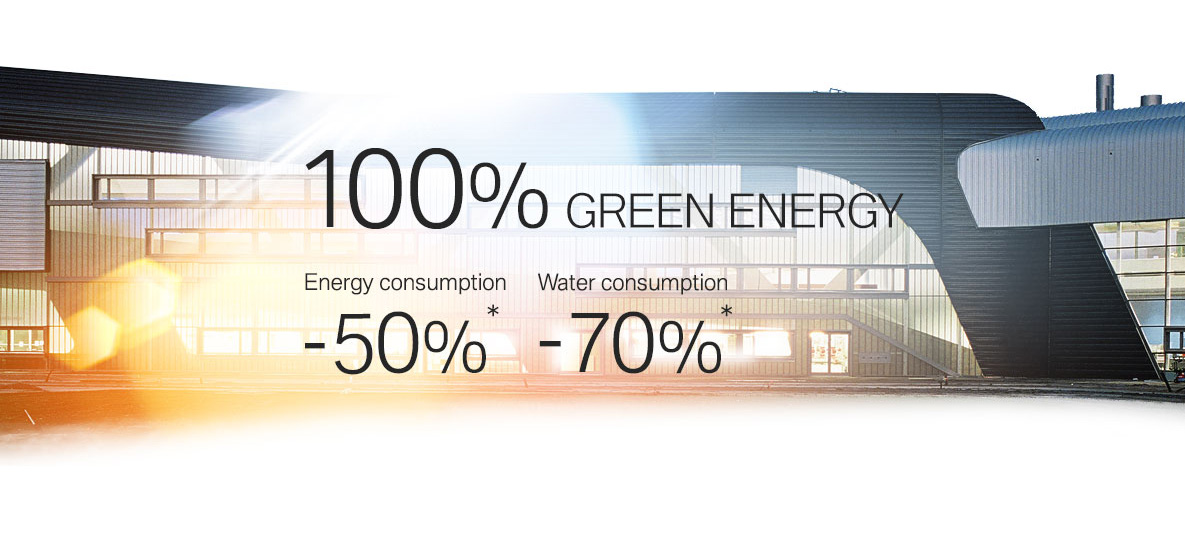
PRODUCTION.
The BMW Group has topped the Dow Jones Sustainability Index every year since 2005 as the world’s most sustainable automobile manufacturer. Rather than become complacent, we were motivated to create new standards: the energy-intensive carbon fibre manufacturing process was set up in Moses Lake, USA, because it can be operated there using clean energy from one of the world's largest hydroelectric power plants – the Grand Coulee Dam. Furthermore, 100 % of the power used by the BMW i manufacturing plant in Leipzig is obtained from renewable energy sources. In addition, the energy consumption required to produce the BMW i3 in the Leipzig plant was reduced by 50 % and water consumption by as much as 70 %.*
*BMW i3 production when compared to the industry-leading BMW Standard.
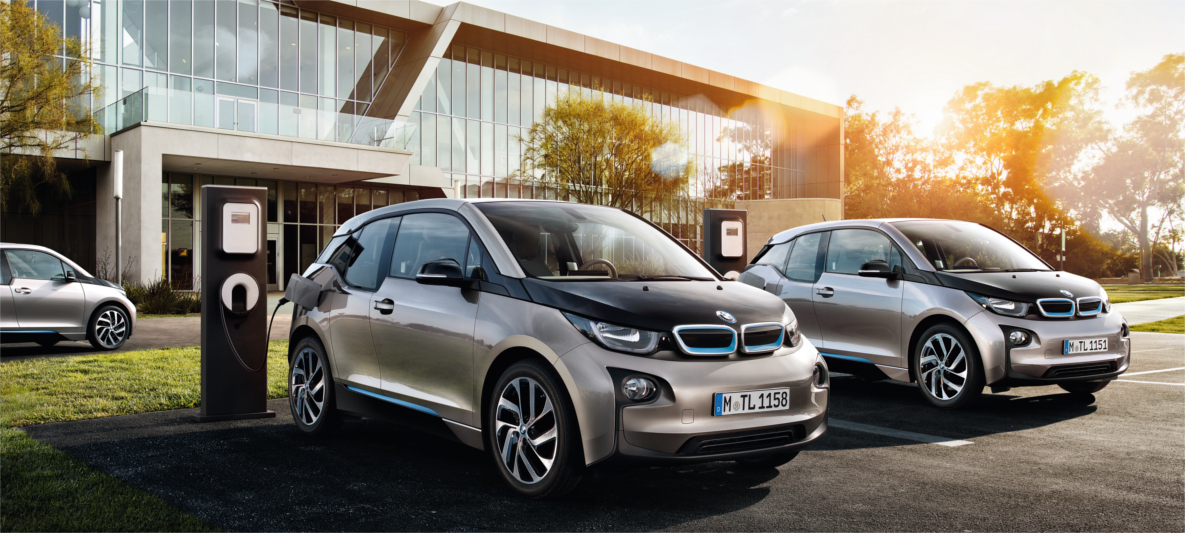
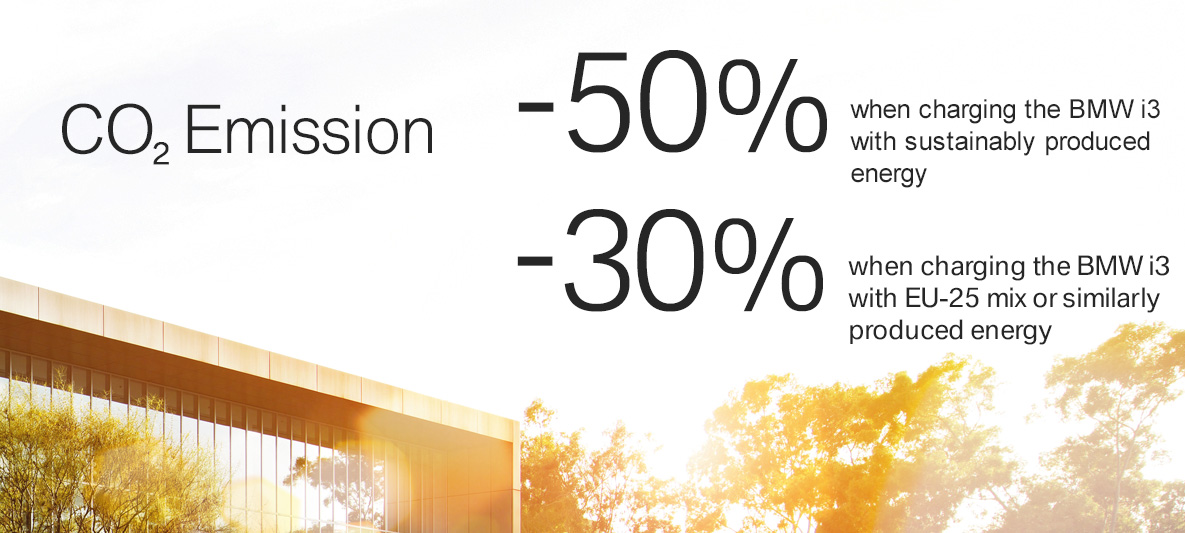
USE.
In order for these electric cars to be both extremely agile and remarkably efficient, an intelligent cooling system keeps the battery at its optimal operating temperature at all times. BMW i drivers can also activate exceptionally economical driving modes at the push of a button, thus extending the range by around 30 % to almost 200 km.*
Consistent sustainability means that CO2 emissions produced not only by the vehicle itself, but also when the vehicle is manufactured and when electricity is generated are significantly reduced or completely eliminated. This is why BMW i is working with sustainable partners, including renewable energy producers, to make electricity from renewable sources easily accessible to BMW i drivers.
* Determined in internal BMW consumption studies. The driving range is depending on a variety of factors, especially: personal driving behaviour, selected route, weather conditions, usage of heating/cooling and preconditioning.
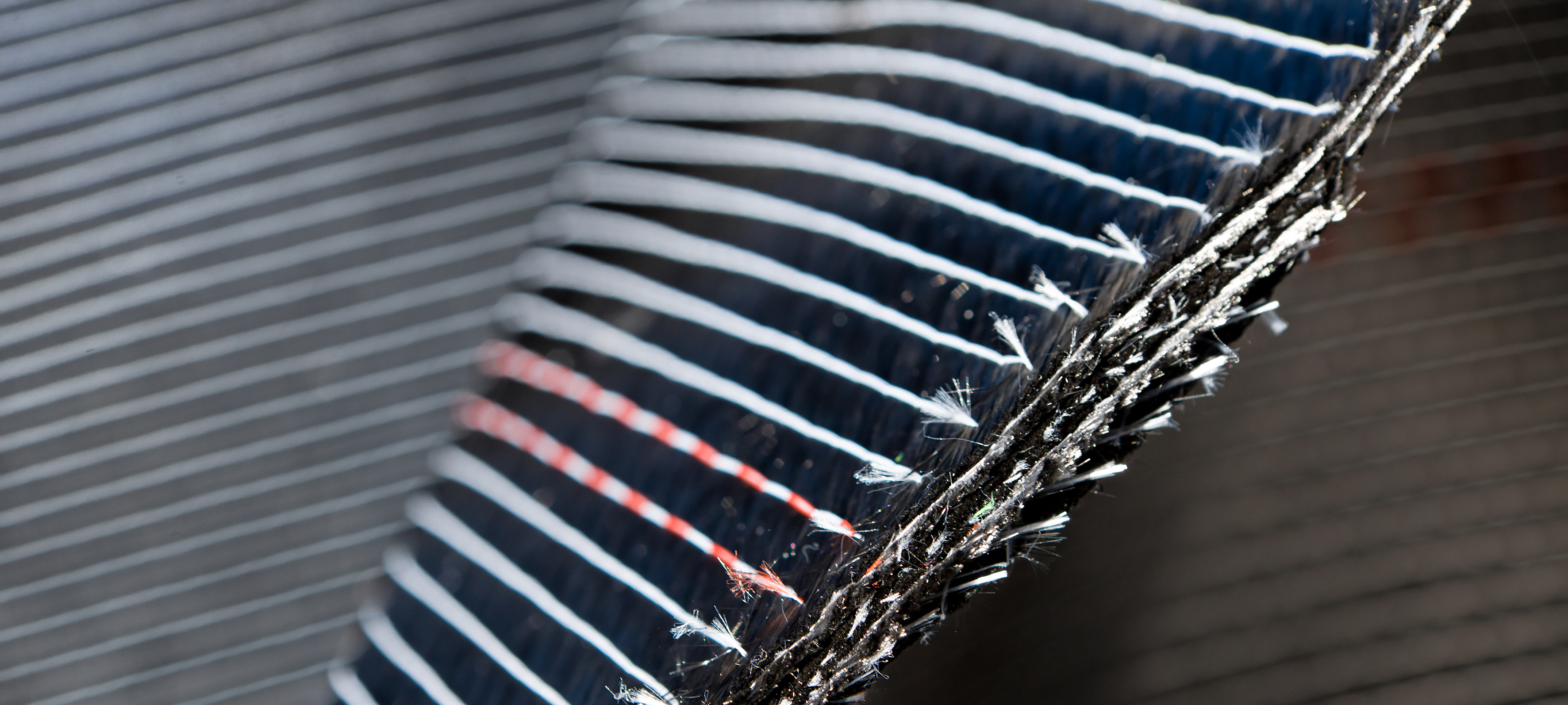
RECYCLING.
How can electric components be recycled most efficiently? By reusing them. There are many ways to repurpose the high-performance lithium-ion high-voltage battery from a BMW i vehicle after its use: Easy and effective intermediate power storage in solar or wind power systems is just one example.
BMW i is also a pioneer in the processing of carbon fibres and their recycling. For the BMW Group, remnants from carbon production and the production of carbon components are valuable materials that are either channelled back into the production process or reused in other areas.
But even that was not enough for us: 95 % of the materials used to produce a BMW i3 can be recycled.

VERIFIABLY SUSTAINABLE.
For the first time in the history of the BMW Group, demanding sustainability targets for a newly designed vehicle over its entire life cycle were already defined during the early strategic phase. These take into account the value chain as a whole, including sourcing, production, usage and subsequent recycling.
In order to evaluate the achievement of concrete objectives, an environmental footprint was determined during the entire development of the BMW i3. And this footprint confirms that the overall approach for the BMW i3 is a model for success.
Electric drive
A crucial contribution is made by the electric drive of the BMW i3, which is significantly more efficient than petrol or diesel engines. If generating electricity for the high-voltage battery is also taken into account, there is further scope for optimising the environmental footprint.
Innovative lightweight construction
BMW i further intensifies the BMW Group long-term strategic commitment towards ecological, economical and social sustainability. One result of this approach was the decision to maximise the use of energy-efficient lightweight materials (e.g. aluminium and CFRP) that are produced using electricity generated from renewable sources.
Sustainable production cycle
During the manufacture of the Life module, the BMW Group makes use of its unique expertise in the field of industrial CFRP production. In a process developed especially for BMW i automobiles, offcuts from the manufacture of CFRP can, for example, be reintroduced into the production stages. This reduces the need for raw materials from the carbon-fibre plant in Moses Lake (USA), where the source material is produced for all components manufactured from CFRP in the BMW i3.
Use of renewable electricity
The electricity for production of BMW i automobiles at the Leipzig plant also comes exclusively from renewable energy sources. For this purpose, wind turbines were installed on site in order to supply electricity directly for the production process. In addition, 100% of the energy required for manufacturing at the carbon-fibre plant in Moses Lake (USA) comes from locally generated hydropower.
Confirmed by the ISO certificate 14040/14044
The environmental footprint of the BMW i3, which confirms that the set objectives have been achieved, meets the most stringent international standards. The Declaration of Validity issued by the independent TÜV SÜD Technical Inspectorate confirms that the methods applied by BMW i are compliant with the latest engineering standards and meet all requirements of the strict ISO standard 14040/14044. TÜV SÜD reviewed all data and methods used for the environmental footprint in accordance with clearly defined criteria. Via the definition of targets as well as constant monitoring, it was possible to reduce the greenhouse potential of the all-electric BMW i3 in comparison to a conventional vehicle by between 30% and over 50% (provided that electricity from renewable sources is used when driving).
